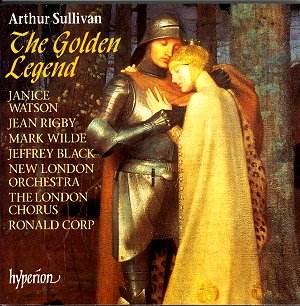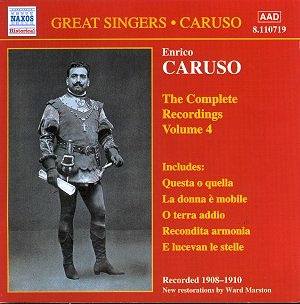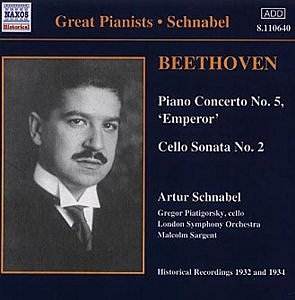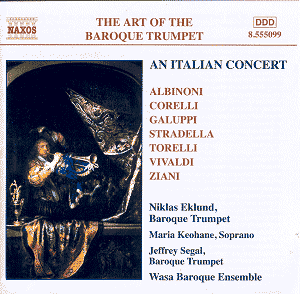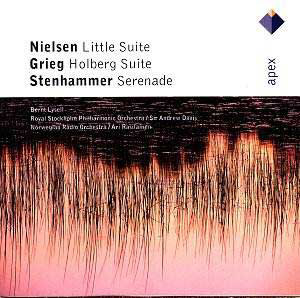 Composer: Wilhelm Stenhammar, Edvard Grieg, Carl Nielsen
Composer: Wilhelm Stenhammar, Edvard Grieg, Carl Nielsen
Works: Serenade, Op. 31; Holberg Suite, Op. 40; Little Suite, Op. 1
Performers: Royal Stockholm Philharmonic Orchestra/Sir Andrew Davis; Helsinki Strings/Géza Szilvay; Norwegian Radio Orchestra/Ari Rasilainen
Recording: Stenhammar recorded at Stockholm Concert Hall, Sweden, February 1998; Grieg recorded Roihuvuori Church, Helsinki, Finland, August 1995; Nielsen recorded Lindemann Hall, Oslo, Norway, February 1995
Label: APEX
In the landscape of Scandinavian music, Wilhelm Stenhammar often finds himself overshadowed by his more illustrious contemporaries. His Serenade, Op. 31, emerges as a compelling testament to his originality and depth, blending influences from Sibelius to Brahms while retaining a distinctive voice. Composed between 1907 and 1914, the piece represents a pivotal moment in Stenhammar’s development as a composer, showcasing his ability to weave lyrical themes within a richly textured orchestral fabric.
Sir Andrew Davis leads the Royal Stockholm Philharmonic Orchestra in a performance that fully realizes the Serenade’s multifaceted nature. The first movement opens expansively, its pastoral quality reminiscent of a sun-drenched Scandinavian landscape. Davis’s interpretation highlights the work’s inherent sense of fantasy, allowing the listener to experience the ethereal quality of Stenhammar’s melodic lines. The orchestration is particularly noteworthy; the horn fanfares evoke a sense of grandeur while the lower strings provide a warm, resonant foundation. Bernt Lysell’s violin performance is a beacon throughout, articulating the intricate solo passages with both clarity and emotional depth.
The transition into the Canzonetta is seamless, revealing Stenhammar’s ability to evoke a Dvořák-like charm. Here, the strings sing with a lyrical intensity that is both haunting and joyous. The ensuing Scherzo captures the spirit of Sibelius, with its playful yet explosive character, deftly navigating the rapid shifts in dynamics and mood. The psychological continuity between movements is deftly managed; the lively scherzo effortlessly gives way to the introspective Notturno. In this movement, the woodwinds shine, weaving a tapestry of sound that invites reflection and introspection.
Nielsen’s Little Suite, while less remarkable than Stenhammar’s Serenade, offers an interesting contrast. Written in Nielsen’s early 20s, it bears the marks of a composer still finding his voice. The central Intermezzo stands out, drawing on Grieg’s Anitra’s Dance, showcasing Nielsen’s melodic flair. The Norwegian Radio Orchestra, under Ari Rasilainen, delivers a stylish interpretation, though it lacks the dramatic heft found in the earlier works. The recording quality is commendable, with each instrumental color clearly defined, allowing the nuances of Nielsen’s orchestration to emerge.
Grieg’s Holberg Suite, performed by the Helsinki Strings under Géza Szilvay, is a delightful addition to the disc. Szilvay’s handling of the energetic final Rigaudon, with its unmistakable hint of the Sailor’s Hornpipe, captures the essence of Grieg’s neo-classical spirit. The ensemble’s precision and tonal clarity bring a buoyant energy to the performance, though it is the Stenhammar that truly captivates.
This recording from APEX stands out not merely for the inclusion of three diverse works, but for its dedication to showcasing Stenhammar’s significant Serenade. The performances are polished, with each orchestra bringing its own character to the pieces. The sound engineering supports the rich textures of the orchestras, ensuring that the listener can appreciate the intricate details of the compositions. Stenhammar’s Serenade is an essential listen, illuminating the importance of this often-overlooked composer within the broader context of early 20th-century music.
